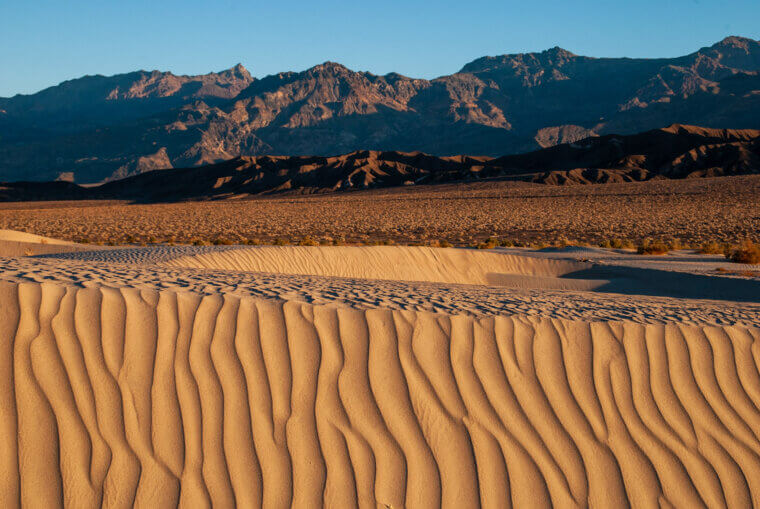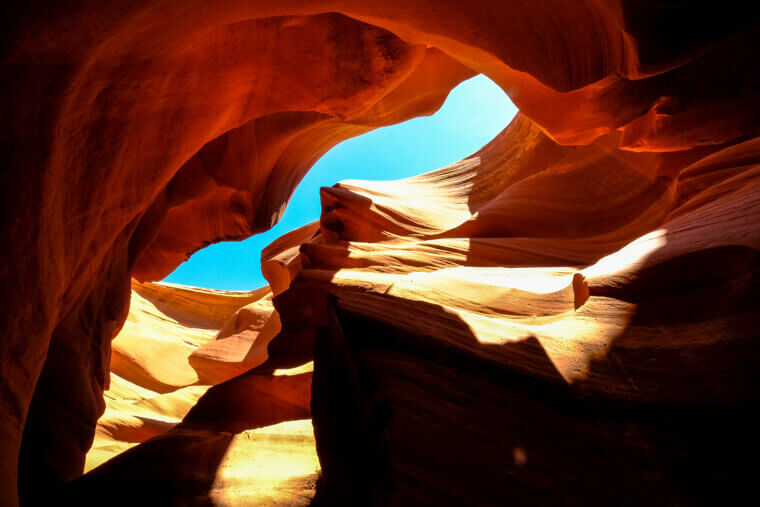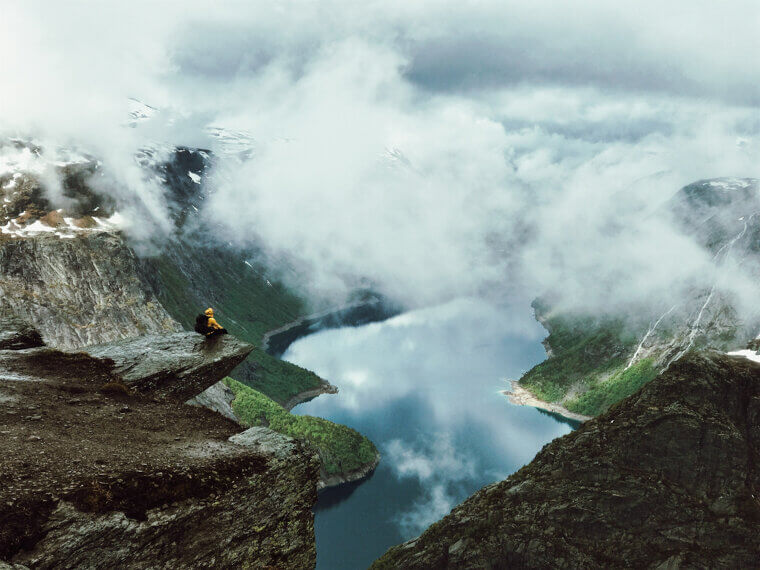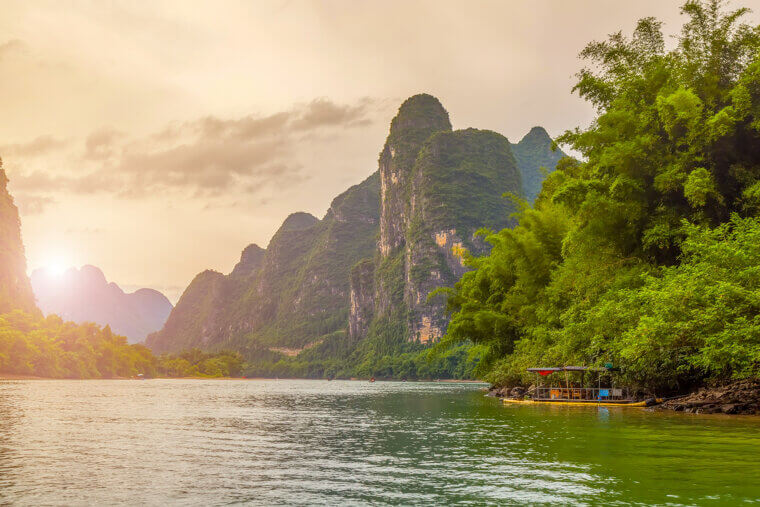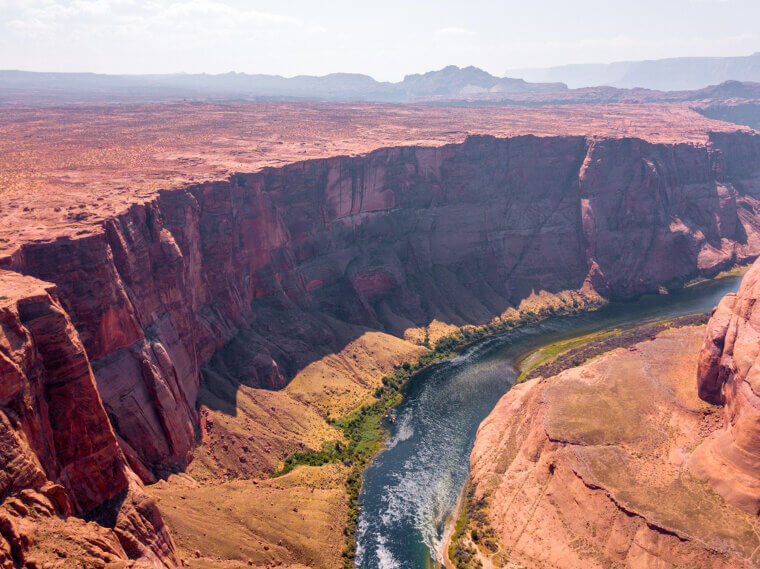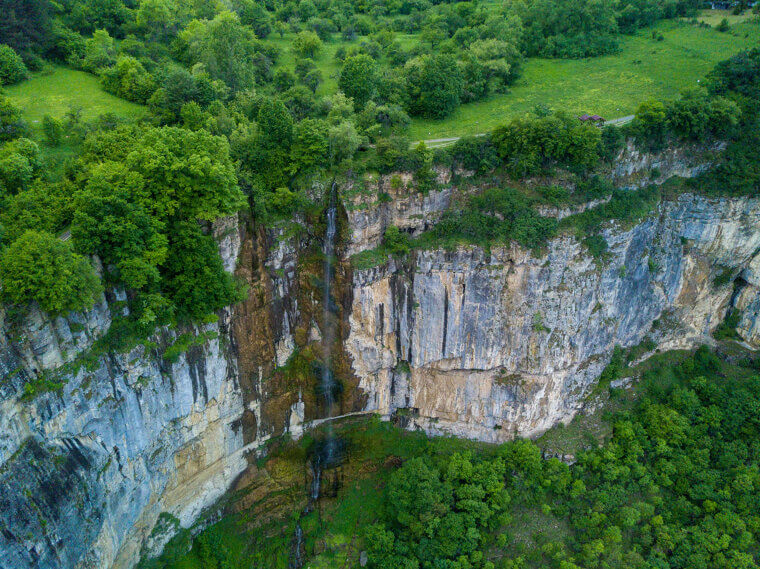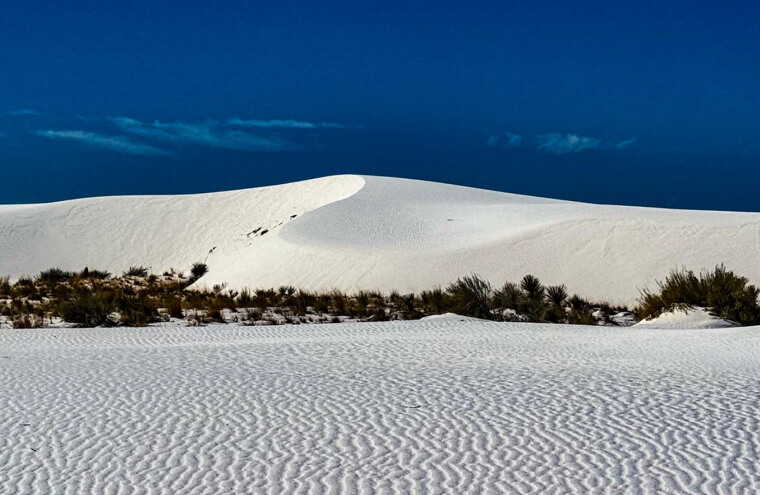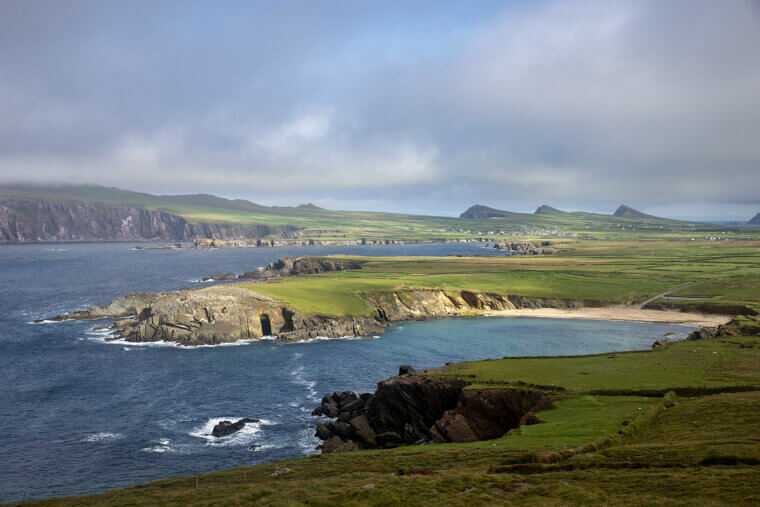Sossusvlei Dunes, Namibia
At Sossusvlei, star dunes rise like red waves, glowing at dawn as long shadows sculpt their curves. Trade winds herd quartz grains upwindward slopes, then let them tumble down slipfaces, building ridges that record decades of direction and strength. Visit May through September for cooler air and calm climbs. Hike early, protect your gear from grit, and use low sun for texture. Nama and Herero stories personify the wind, which fits the mood. Stay on marked routes so fragile desert crusts can survive, and the sands continue to sing for generations.
Antelope Canyon, USA
Antelope Canyon is a stone ribbon where flash floods sculpt Navajo Sandstone into flowing corridors and midday light beams. Monsoon cloudbursts drive abrasive slurry that chisels sinuous passages and flutes the walls. Guides from the Navajo Nation manage entry for safety and respect. Late spring through early autumn brings the best beams in Upper Antelope. Bring fast lenses, point upward, and keep dust out of gear. Cross beds reveal ancient dune seas captured in rock. Never enter slots when storms threaten anywhere upstream, because water outruns footsteps by a lot.
Norwegian Fjords
Norwegian fjords feel like cathedrals carved by traveling ice. Glaciers sculpted U-shaped valleys that later flooded, leaving cliffs, hanging valleys, and waterfalls that silver the rock. Late spring through early autumn offers long light and calm boat trips. Use a polarizer to cut glare and bring small boats into frame for scale. Moraines and polished bedrock trace the ice’s stops and starts. Farmhouses cling to ledges while ferries stitch communities together. Keep wakes low and voices soft near wildlife-rich shores where porpoises and sea eagles roam at dusk.
Ha Long Bay Karst, Vietnam
Ha Long Bay is a limestone labyrinth where rainwater and soil turn slightly acidic, dissolving rock into towers crowned with jungle. Waves undercut bases and caves thread the interiors. October through April brings clearer skies and gentler seas for kayaks. Misty mornings add depth layers your camera loves. Karst cones, sinkholes, and dolines map hidden groundwater paths below. Floating hamlets and legends of descending dragons anchor culture between the pinnacles. Choose low-impact boats, pack out plastics, and respect cave closures so this storybook coast can continue to thrive for future travelers.
Bryce Canyon Hoodoos, USA
Bryce Canyon arranges hoodoos like a choir of stone, with orange and pink hues at sunrise and a dusting of snow in winter. Freeze-thaw cycles wedge cliffs apart, then summer rains wash softer layers away, leaving caprock hats perched on slender necks. Walk the rim and the floor to gain different perspectives, and bracket exposures in high-contrast light. Paiute stories describe tricksters turned to stone, which feels right amid the spires. Stay on trails and give fragile soils space, as surprisingly careless boots on steep slopes can damage crumbly pinnacles and slick clay.
Zhangjiajie Sandstone Pillars, China
Zhangjiajie’s quartz sandstone pillars look like a vertical forest, each chimney capped with pines and veiled by mist. Warm, wet weather, root wedging, and steady winds exploit joints and fractures, isolating slim towers over time. Spring and autumn bring clearer views and soft haze that adds depth. Use a telephoto to stack layers and include cableways or bridges for scale. The landscape shaped classical painting and inspires modern cinema. Stay on platforms, avoid feeding wildlife, and pack out litter so the park’s magic remains wild for others in every season.
White Sands Gypsum Dunes, USA
White Sands spreads a blinding sea of gypsum dunes across New Mexico’s Tularosa Basin, glittering under blue skies. Evaporation leaves crystals that wind grinds into fine sugar grains, then heaps into migrating parabolic and crescent forms that reveal shifting wind regimes. Late afternoon cools the sand and casts long ripples for dramatic photos. Expose carefully to avoid clipping whites, and use footprints for scale and story. Local lore ties the dunes to scarcity and resilience. Avoid cryptobiotic crusts, respect closures, and be wary of gusts that can erase tracks instantly during sudden squalls.
Faroe Islands Sea Stacks, North Atlantic
The Faroe Islands feature coasts sculpted by storms, with basalt cliffs, arches, and sea stacks, such as Drangarnir, standing guard. Swell, salt spray, and relentless wind exploit fractures, then isolate towers while seabirds stitch white arcs across the air. May to September brings steadier seas and noisy bird cliffs. Shoot from boats with dry bags, keeping the balance steady, and include birds to add motion and scale. Columnar basalt records ancient lava, while wave-cut platforms trace old sea levels. Respect closures, because rogue waves and slick grass punish bravado more than pride.

